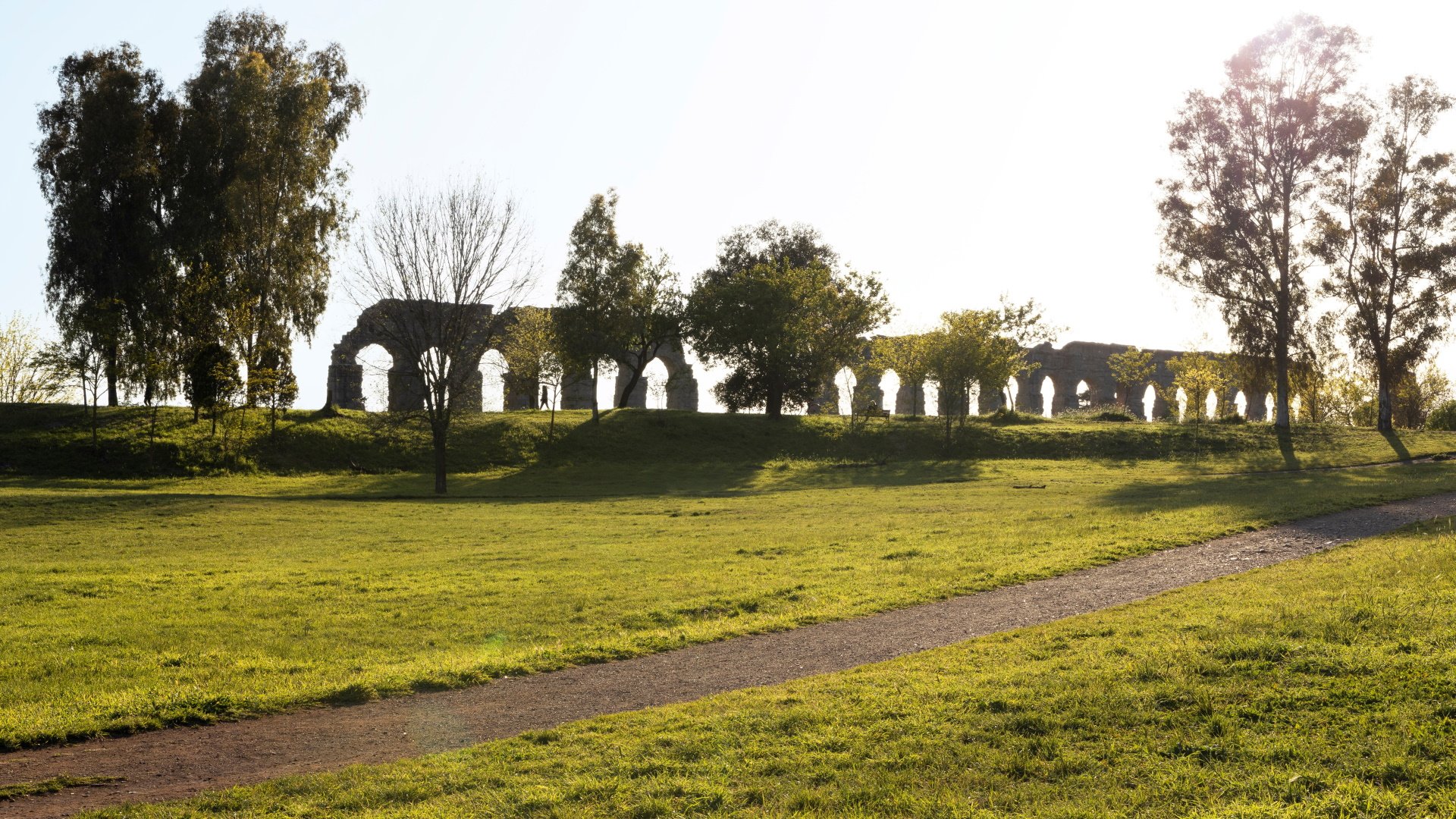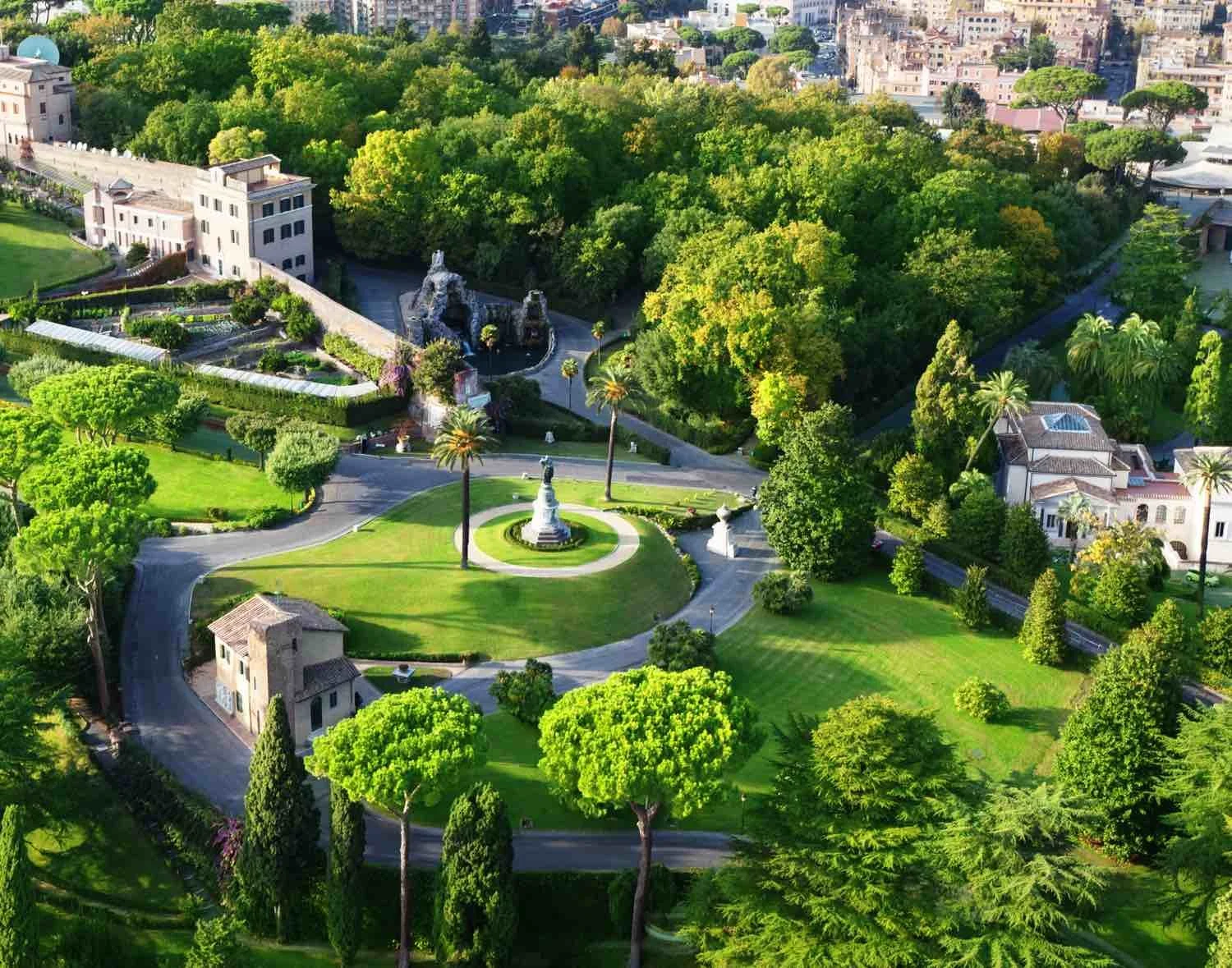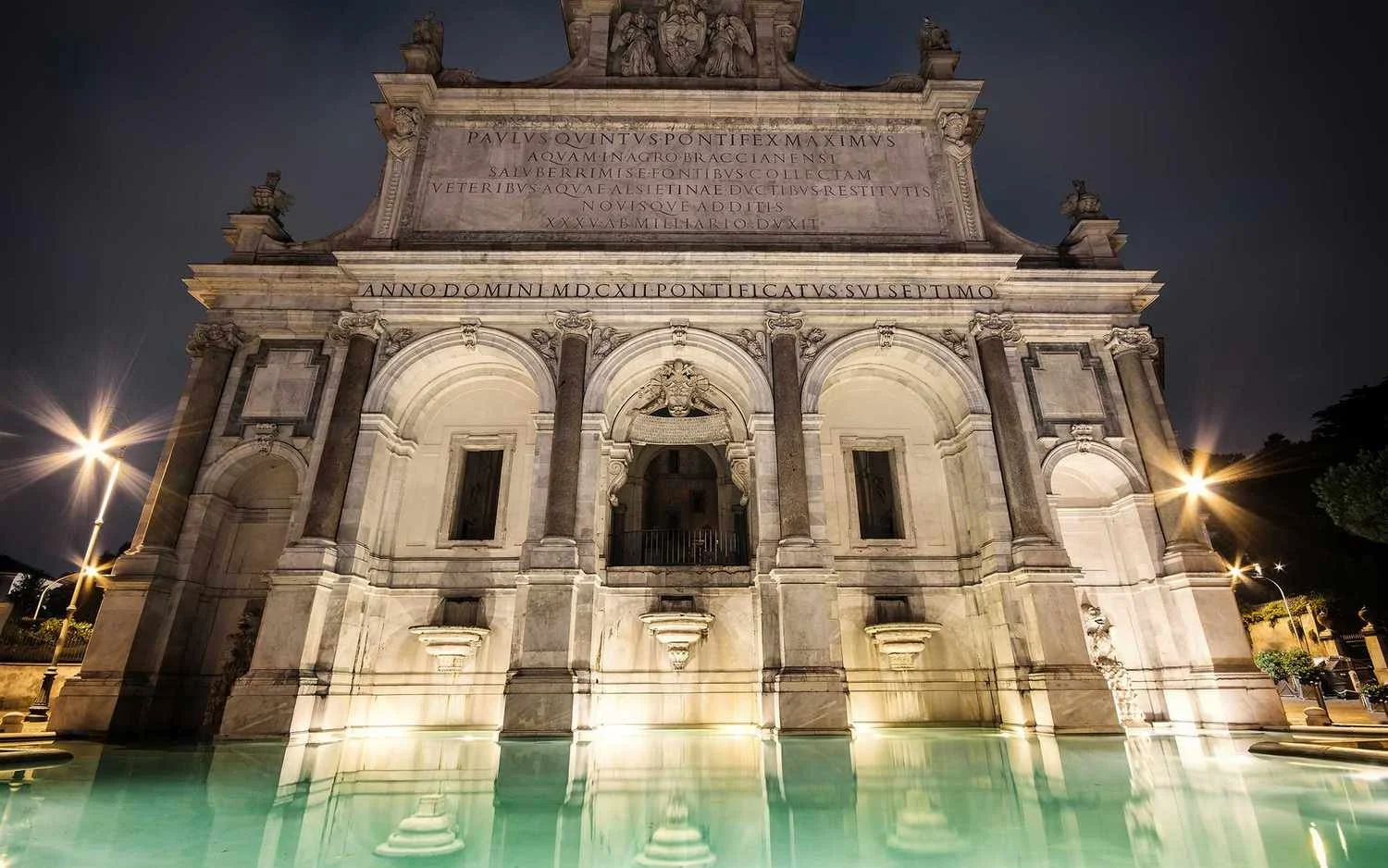PARK AND VILLAS
The most fascinating Parks, scenic attractions between the Roman countryside and historic villas and Castels on the Valleys .




-

Parco degli Acquedotti
One of the most fascinating parks in Rome lies between Via Appia and Via Tuscolana and extends for about 240 hectares, between the scenic attractions of the Roman countryside up to the Castles. They are immersed in an atmosphere suspended in time, especially enjoyable in the pink light of sunset, up the imposing arches of the Claudius aqueduct and the Felice aqueduct, framed by pine trees. Rich in history, the Park of the Aqueducts is one of the green lungs of the city. It is part of the Appia Antica Suburban Regional Park. Its name comes from the junction point of the water network of ancient Rome which is located in the area. It was the place where the aqueducts that supplied water to the city, the patrician villas, the baths, and the fountains, intersected and overlapped.
-

Monte Mario parco Mellini
The Mellini Park is a nature reserve located on Monte Mario, a hill that dominates the Valle Tiberina. The area has been inhabited since prehistoric times. Numerous residential villas were built there in Roman times. During the Renaissance, noble families chose to reside in the area, thanks to its position that dominates the city. In fact, in the park, there are several historic villas including Villa Madama, which is now the seat of representation of the Presidency of the Council of Ministers and the Ministry of Foreign Affairs; Villa Mazzanti, which is the headquarters of the Roma Natura regional authority; and Villa Mellini, which is one of the few fifteenth-century residences that have come down to us, even though it was largely remodeled in the nineteenth century. From 1935 to 2000, villa Mellini housed the Astronomical Observatory of Monte Mario and the Astronomical and Copernican Museum. Today it is the seat of the Presidency and Central Administration of the National Institute of Astrophysics (INAF).
-

Giardino del Campidoglio
The gardens of the Capitol climb the slopes of the hill of the same name, in the center of Rome. Large caves dug into the rock of the Capitoline Cliff, are characterized by parts of stone walls, belonging to this building demolished in the thirties of the twentieth century. The first interventions that started the transformation of the area into a garden were carried out in the nineteenth century, under the pontificate of Pius IX. Walking along the staircase that leads to the Capitoline Museums, on the left, you can see the bronze statue of Cola di Rienzo, made by the sculptor Gaetano Masini at the end of the nineteenth century.
-

Giardini Vaticani
The Vatican Gardens occupy about two-thirds of the surface area of Vatican City and have been the Pope's place of rest and meditation since 1279 when Pope Nicholas III moved the papal residence from the Lateran to the Vatican. The period of greatest architectural development of the Gardens was between the sixteenth and seventeenth centuries, when artists and architects such as Donato Bramante and Pirro Ligorio, worked there, creating fountains, statues, and small temples. There are great historical and artistic testimonies that can be found in the gardens. The background to all these important symbols of history and faith is nature: plants, trees, flowers, shrubs, and vines from all over the world that make the garden in any season of the year a riot of colors and scents. The Gardens, which are composed of various areas, Italian Garden, English Garden, and Pope's Garden, are also home to state offices, such as the Governorate Palace and the State Court, the direction of the state radio, the Vatican railway station, and the former Vatican Observatory.
-

Giardino Castel Sant'Angelo
The gardens are located around Castel Sant'Angelo and were created in the 1930s by Attilio Spaccarelli. The area was transformed into a park in 1911, the year of the Universal Exhibition in Rome. On the occasion of the Jubilee of the Year 2000, a classic Italian garden was created next to Castel Sant'Angelo, on the Tiber riverfront: a green area divided into eight flowerbeds with a fountain of the '600 in the center surrounded by hedges, for a pleasant walk overlooking the river.
-

Colle del Gianicolo
The Janiculum Walk consists of two large avenues lined with plane trees. Some of the most evocative views of the historic center of Rome can be enjoyed from the Janiculum hill. On the hill, there is Villa Aurelia and Piazzale Garibaldi. In 1849, the area was the scene of the heroic events of the fighters for the Roman Republic. In 1883, it was turned into a public promenade and it was dedicated to the memory of the Defense of Rome. On the Janiculum hill, there is a statue of Giuseppe Garibaldi on horseback by Emilio Gallori; the equestrian statue of Anita Garibaldi by Mario Rutelli; and the lighthouse donated to the city by the Italians who live in Argentina on the occasion of the fiftieth anniversary of the unification of Italy. Since 1904, every day at 12 o'clock sharp, three soldiers load a howitzer with blanks and fire once from the Janiculum hill. The tradition of the cannon shot dates back to 1846 when Pius IX wanted a single signal to mark the official time. Until 1904, the cannon had fired from the towers of Castel Sant'Angelo and then from Monte Mario.
